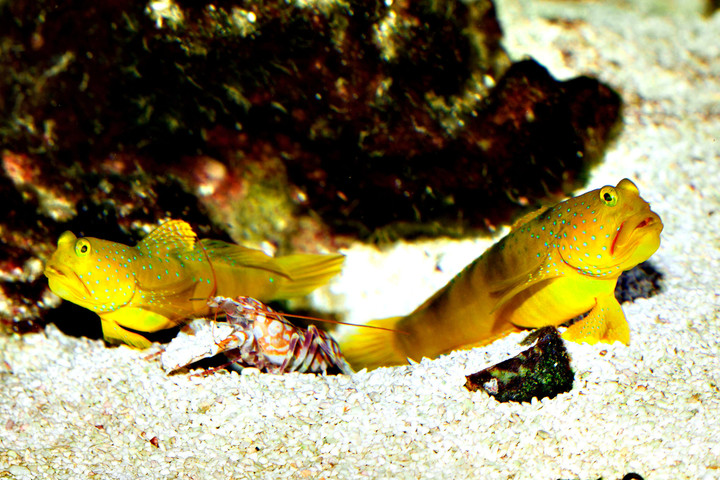Alpheus bellulus

| Latin name | Alpheus bellulus |
|---|---|
| Local name | Tiger pistol shrimp |
| Family | Alpheoidea - Alpheus |
| Origin | East Indian Ocean, Australia, Japan, Indonesia, Central/West Pacific |
| Max length | 4 cm (1.6") |
| Minimum volume |
50 l (13 gal) |
|---|---|
| Hardiness |
Hardy |
| Suitable for aquarium |
Suitable with care |
| Reef safe |
Reef safe with caution |
| Aggressiveness | Peaceful |
| Recommended |
Small crustaceans (Krill, mysis, artemia...) |
|---|
This species must be fed with an appropriately varied diet.
This species is nocturnal and therefore the most active when the light is dimmed or turned off.
The Snapping-/Pistol shrimp derives its name from the snapping sound their large claw makes, which can paralyze their prey. One will therefore often hear clicking sounds coming from the aquarium.
Apart from small shrimp, they are not normally a threat to other creatures in the tank.
Their needs and colour do vary, but common to most of them is that they will generally thrive best as a symbiotic pair with one of the following species: Amblyeleotris spp., Cryptocentrus spp. or Stonogobiops spp.
It is important to research beforehand which fish and shrimp go well together, to avoid the risk of the animals not wanting to pair up.
As a symbiotic pair will make a shared cave in the sand it's important to have a deep enough sandy substrate.
Snapping-/Pistol shrimps can be fed with small pieces of seafood or larger types of frozen food.
Shrimps have many different purposes in the tank, some are just pretty while others are shy but useful. Some remove parasites whilst others help fight different pests.
Read more about the different genera and species for more specific information.
Francesco Ricciardi. 2013. Aquarium Fish: Sharing a small house without conflicts: the pistol shrimp and the shrimpgoby's life - Advanced Aquarist - (English)
Dave Wolfenden. 2012. Special relationships: Keeping pistol shrimps and gobies - Practical Fishkeeping magazine - (English)
Phil Hunt. 2014. Pistol Shrimps and Gobies: Perfect Partners - Tropical Fish Hobbyist Magazine - (English)
Bob Fenner. Shrimp or Watchman Gobies - Wet Web Media - (English)
Ronald L. Shimek. 2004. Marine Invertebrates (PocketExpert Guide) - TFH Publications / Microcosm Ltd. - (English)
Bob Fenner. Cleaner Shrimps of the Family Hippolytidae - Wet Web Media - (English)
James W. Fatherree. A Few Common Shrimps for the Marine Aquarium - Wet Web Media - (English)

